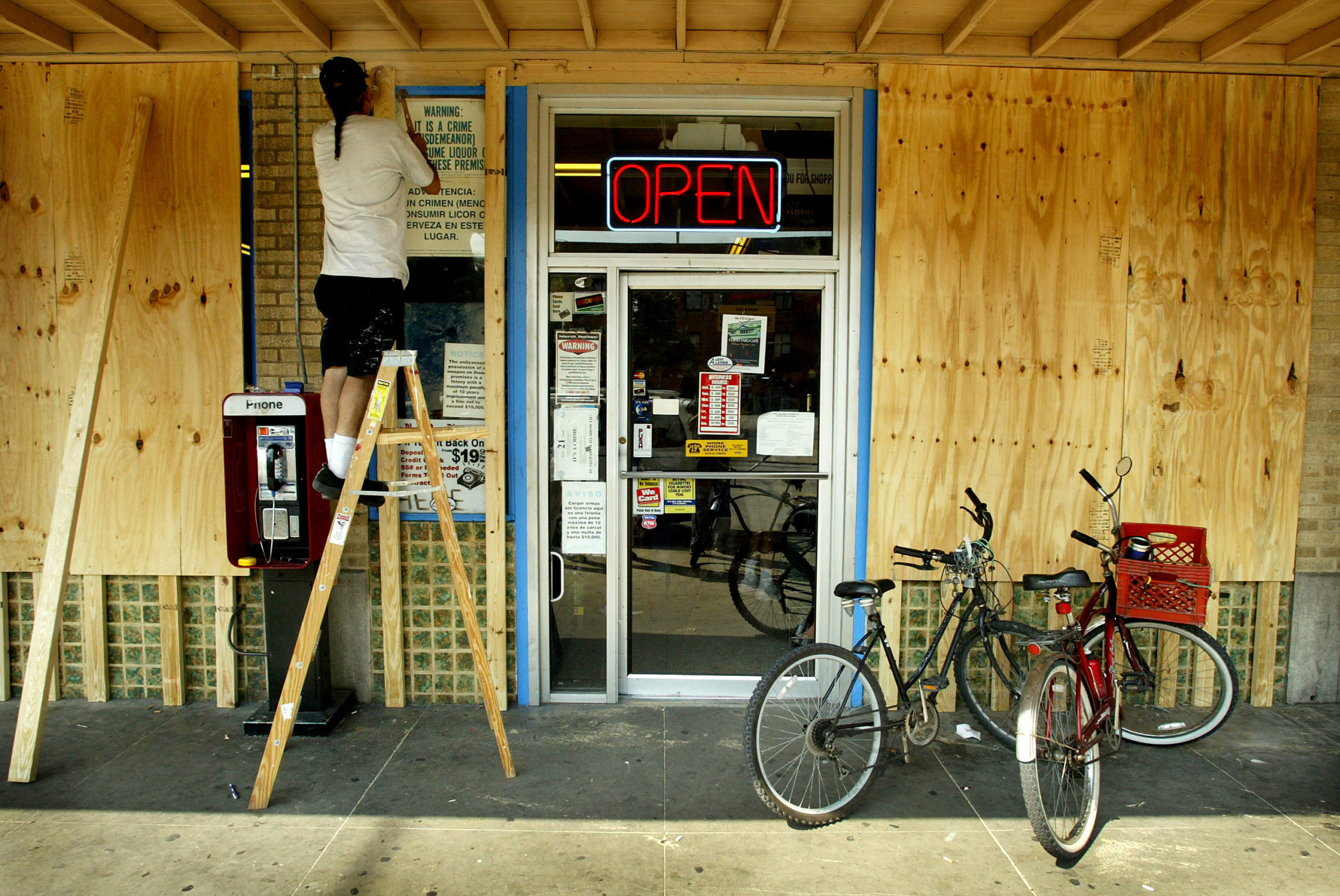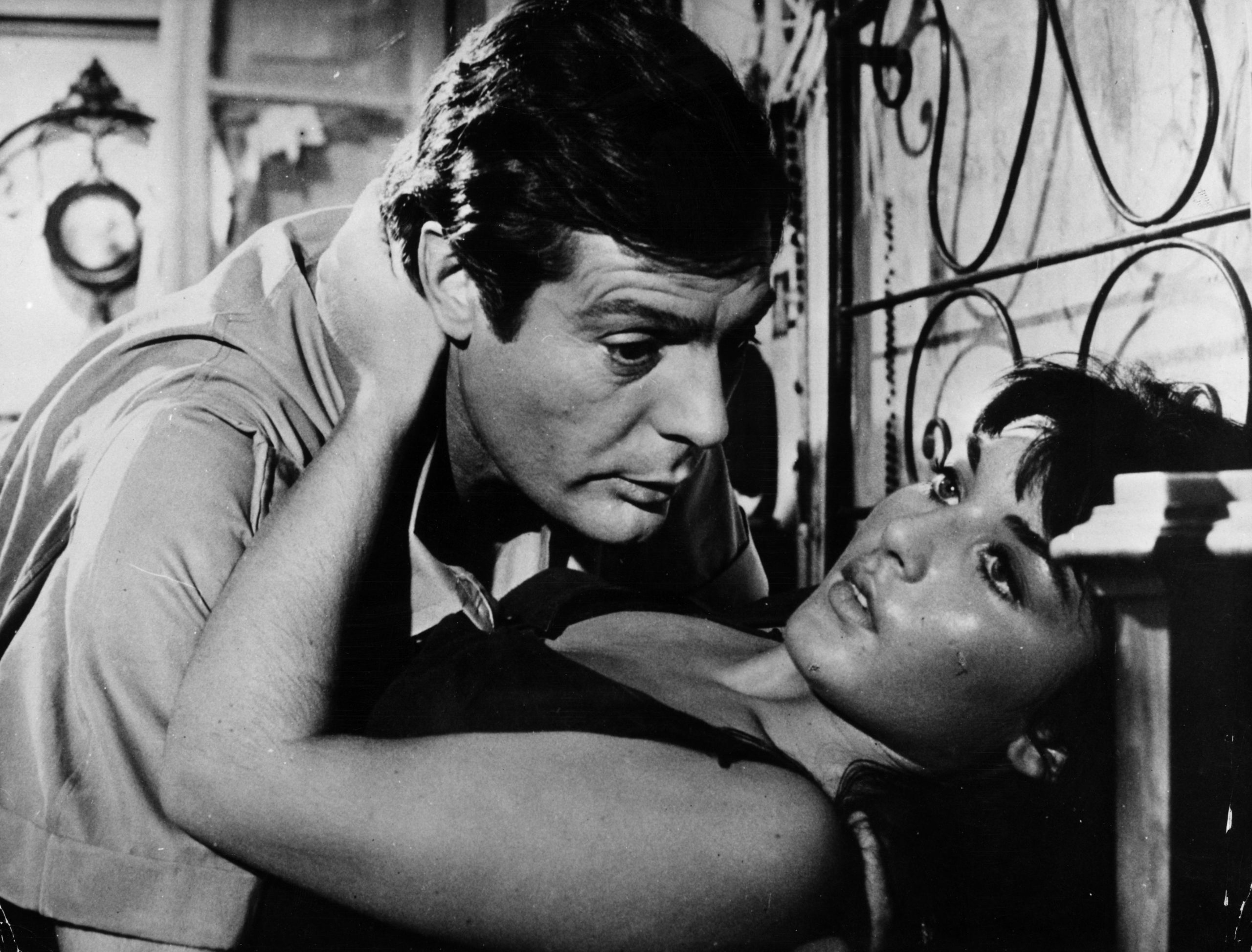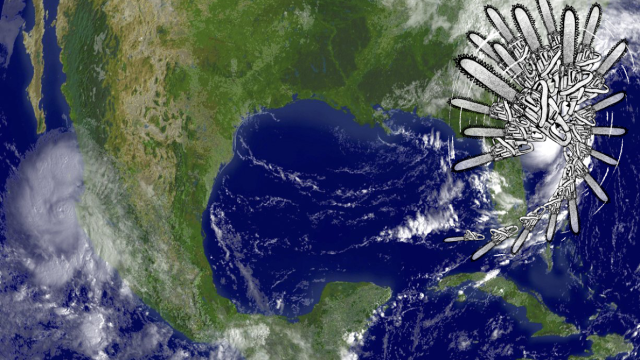The good news is that a modern cyclone will probably not directly kill you. The bad news is that there are many ways you can kill yourself when a tropical system comes knocking on your door. Let’s talk about the way people die in cyclones/hurricanes so you can avoid becoming a tragic statistic.
Aside from slightly different wind speeds, there is no difference between a hurricane, a typhoon, and a cyclone. They are all different names for the same kind of intense low pressure system. Around Australia, storms that form are simply called “tropical cyclones” and they’re the responsibility of the Australian Bureau of Meteorology. Cyclones that form in the southern Pacific Ocean are under the responsibility of New Zealand’s MetService.
Illustration: Jim Cooke, Photo: NASA
Our ancestors had to deal with a world that lacked satellites, television news, and Twitter. As such, they tended to die heroically in storms while trying to save orphans from the waves. You are a modern person of some means, and so if you die in a storm there’s a decent chance you’ll be killed by generators, chainsaws, or electricity in a way that is neither heroic nor unavoidable.
I live in the US and have been trained to go door-to-door after a catastrophe to mark houses in a way that indicates if anyone inside is dead. I’d rather stay home and read than find your bloated corpse, so please take the following to heart.
Every storm is different, but there’s a lot we can generalize.
You’re Going To Drown
There’s that great scene in Butch Cassidy and the Sundance Kid where Paul Newman tries to get Robert Redford to jump into a river to escape the law. Redford refuses to do it, admitting he can’t swim, which leads to Newman delivering one of the best movie lines of all time: “Are you crazy? The fall will probably kill you!”
It’s backwards with hurricanes. The brute force of the wind of a tropical system is unlikely to kill you unless you’re outside or unlucky enough to have a tree land on you (hint: avoid trees). If you are killed directly by a storm you’ll probably drown. Approximately 76 per cent of deaths directly related to the impact of storms, according to a recent study from the American Meteorological Society, came from water.
Specifically, people die from storm surge, which is when the power of the storm moves water and the power of water inland. It is scary. Hurricane Katrina was the deadliest storm of the modern era and most people died from drowning.
When you’re asked to evacuate, it’s often because you’re at risk of drowning, even if you’re fairly far inland. A secondary cause of drowning is the flooding often associated with storms and, often, those are people in cars or trucks trying to drive through the water.
Even though this is the most common form of death during a storm, if you evacuate properly you will greatly reduce the odds of dying this way in a storm. The study linked above that examined Katrina deaths determined that you were more likely to die if you were older than 75 years and concludes many people were unwilling or, tragically, unable to evacuate.
Again, if you’re reading this, you are probably not going to die that way unless you decide to drive into floodwaters or live somewhere that floods frequently and lack the means or sense to flee.
Bottom line: If someone asks you to evacuate, listen.
You’re Going To Kill Yourself With Fire

Photo: Stuart Wilson/Getty Images
You know what sucks? Not having power. I’ve experienced enough storm-related outages to sympathize with anyone who lacks electricity for long periods of time. It becomes unbearably hot and sticky during the day. The suddenly darker nights are punctuated only by the sounds of snapping limbs and chainsaws. Not fun.
People often respond to this by burning candles or trying to cook with camping implements. I like candles. A candle provides nice ambience. LED flashlights tend to make my skin look pale and green.
Hurricane Opal in 1995 took a similar path to the storm currently in the Gulf, striking Florida near Pensacola in early October. There were a total of 27 people killed by Opal, according to the CDC, and as many people were killed after the storm as during the storm. Three people died in fires, and two of them were caused by candles (the other was caused by a propane cooking device).
In Hurricane Hugo, which struck South Carolina in 1989, no one died before the storm hit and only 13 people were killed during the storm. A whopping 22 people reportedly died due to storm-related traumas after the storm and nine of them died either from smoke inhalation or burns from five different fires caused by candles. Most of the dead were children.
Bottom light: Buy a flashlight.
You’re Going To Poison Yourself With Your Own Generator

Photo: Wathiq Khuzaie/Getty Images
Related to the candles thing, but worth their own section, are generators. Generators are a great thing if you know what you’re doing. A lot of people think they know what they’re doing. They don’t. Then they die.
There may be a reason why you need a generator, whether it’s to run a dialysis machine or to maintain some other kind of life-saving equipment. Otherwise, it may be a convenience that’s not worth the risk.
In Hurricane Ike, which struck Houston in 2008, two trees fell on the house I was in and I didn’t die. In this way I was fortunate. A total of 74 deaths were directly linked to the storm and of those, a whopping 13 people were killed by carbon monoxide poisoning. That’s more than people killed by drowning (8) and nearly twice as many deaths from generators than deaths caused by trees falling on people (7).
Bottom line: Read the manual.
You’re Going To Kill Yourself Preparing For The Storm

Photo: Scott Olson/Getty Images
It’s reasonable to want to prepare by boarding up windows and trimming trees so they don’t fall on your house. Like I said earlier, I was in a house that had two different trees crash through the roof. It wasn’t great.
If you’re outside the evacuation zone, the best way to prepare for a storm is to buy water, ice, medicine, non-perishable food, and other things you need to be comfortable and safe. Once that’s done, move anything that might fly through the window (like house plants and furniture) inside. The CDC calls it the “preimpact” period and there are some really unfortunate ways people die.
Before Hurricane Marilyn, a teenager in Puerto Rico died of electrocution while trying to remove a TV antenna from their roof. Seven people were killed preparing for Ike, including a man who electrocuted himself by drilling into a live wire while putting screws in his roof and a 10-year-old boy struck by a tree limb someone else was being cut off a tree presumably to avoid having it kill anyone.
Are you a professional or well-trained in home repair and tree trimming? No?
Bottom line: Chill and then call a professional.
You’re Going To Kill Yourself Cleaning Up After The Storm
Most of the lessons above apply here. A lot of people die after the storm. Ike, again, is a terrible but telling example here, with most of the deaths in that storm occurring after landfall. If you read enough post-storm mortality reports you’ll see a pattern emerging.
Often, professionals removing trees from power lines or repairing roofs are killed. One utility worker was killed during Ike. Four people were electrocuted after Hugo, including a professional working on power lines and one repairing a roof.
Chainsaws are great. They’re also deadly, whether you’re operating it or standing near someone operating one. During Hugo, two bystanders were killed by trees that were being removed or trimmed after the storm. One person in that storm killed themselves with their own chainsaw.
Worse than that? People with bad hearts trying to clean up. After Hurricane Opal there were three people killed due to heart issues related to cleaning up. In Houston, during Ike, 12 people died from cardiovascular illness, though it’s not clear how many of those people died in cleanup.
If you don’t know what you’re doing, or are in poor health, you may be tempted to run out and make things right again.
Bottom line: Be careful and ask for help.
What You Would Be Better Off Doing

Photo: Keystone/Getty Images
Assuming you’ve prepared for the storm and aren’t in any immediate danger from the impact, the best thing you can do is find the safest part of your home and stay there and do nothing.
Has the storm passed? Is it all safe and clear? Are you grateful to be alive? Great! The best thing you can do is not nothing but carefully do a few things. Specifically, you should account for your supplies and your immediate family, check on your neighbours, do a quick check of your place if you’re a homeowner, verify there are no limbs hanging by a thread or downed power lines threatening your home, call your insurance company, hire a professional to deal with any issues you can’t safely deal with yourself, and then do nothing.
Honestly, the best thing a well-prepared person can do immediately before, during, and after a storm is Netflix and chill but, since Netflix may not be working, just softly bone amid the glow of an LED flashlight.
